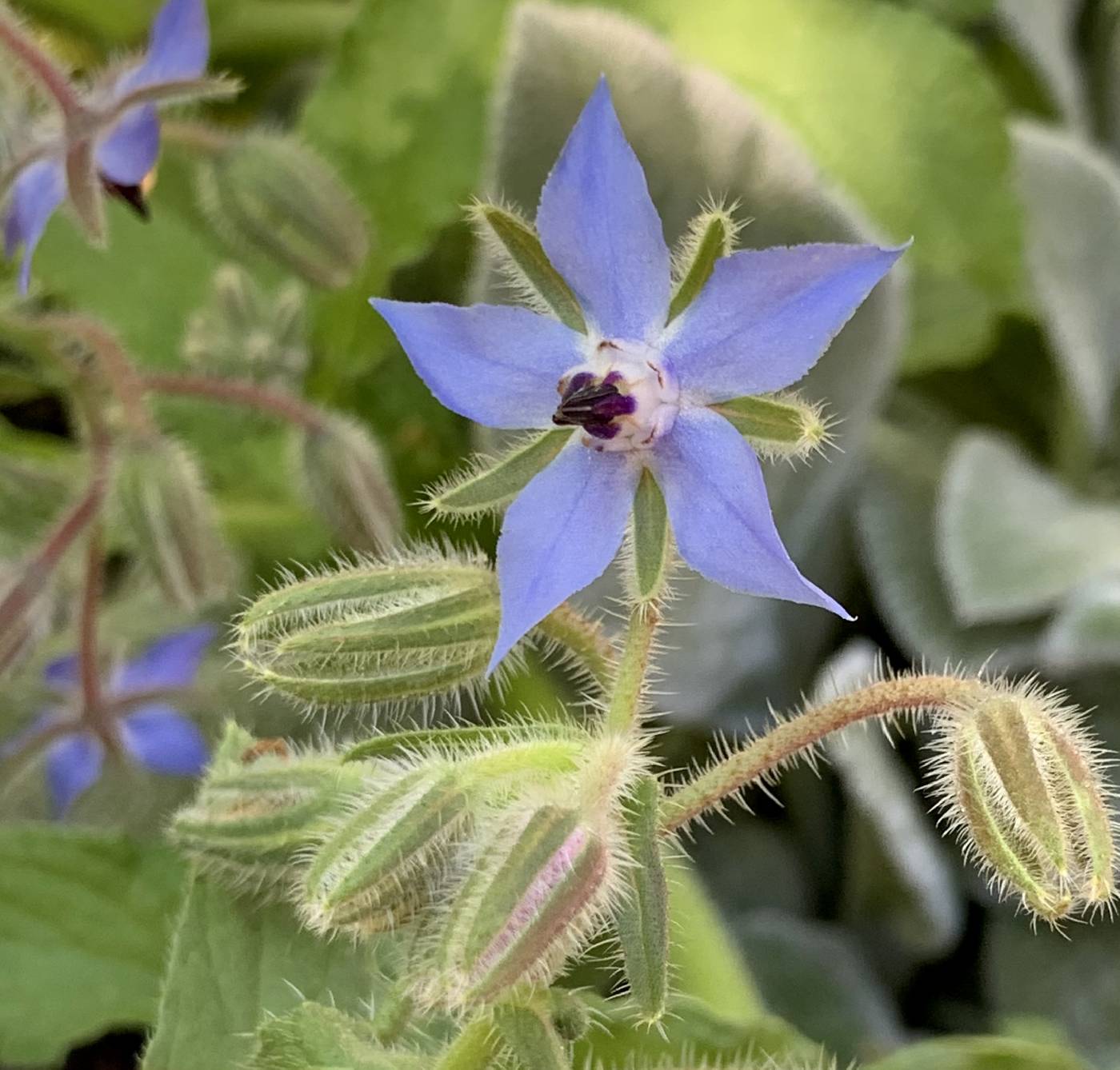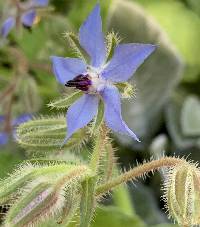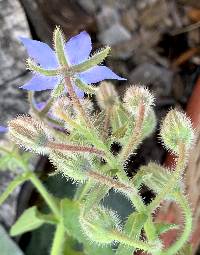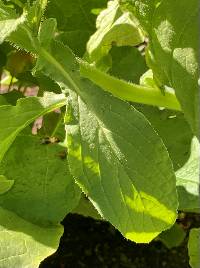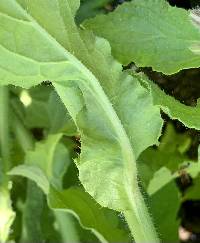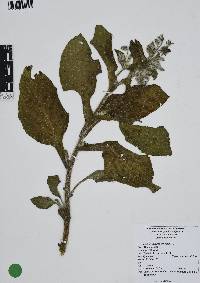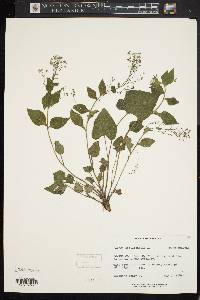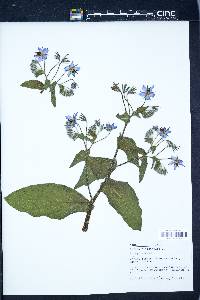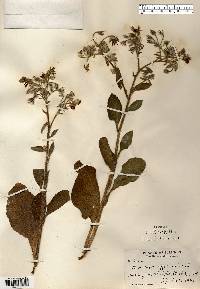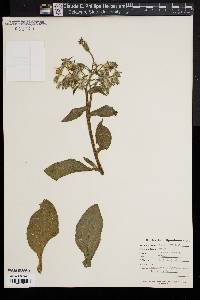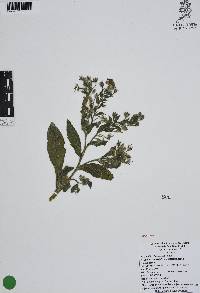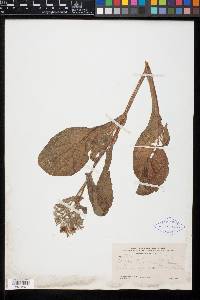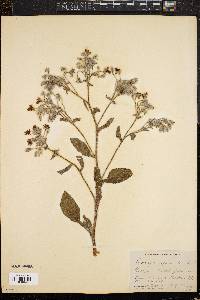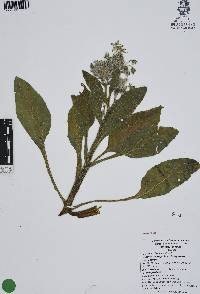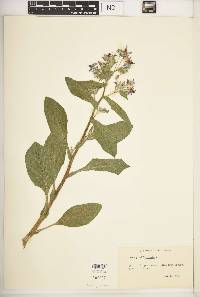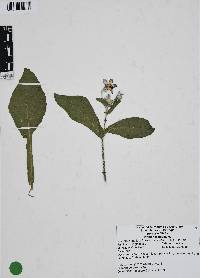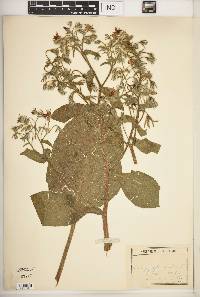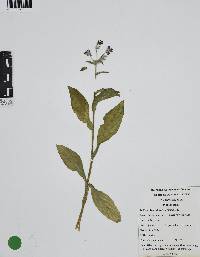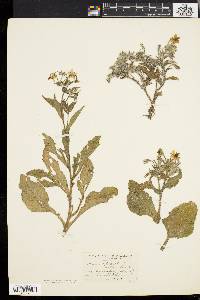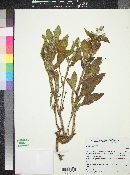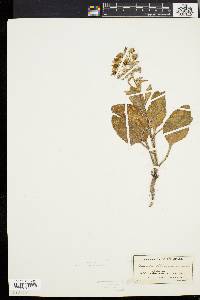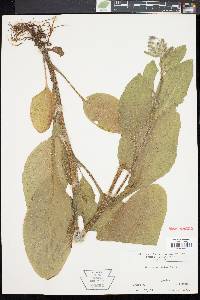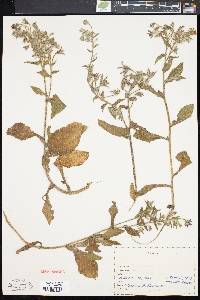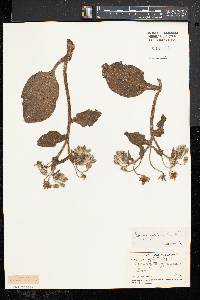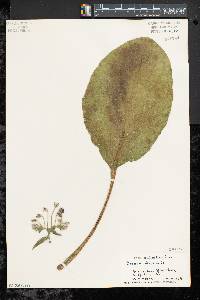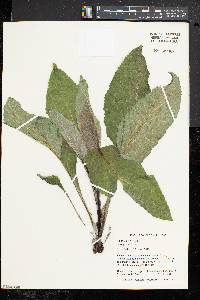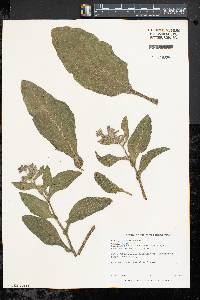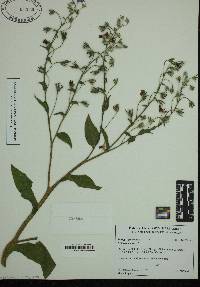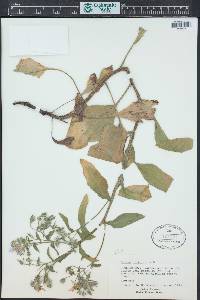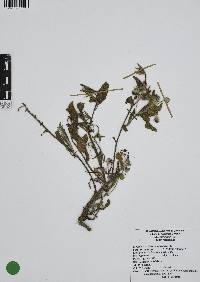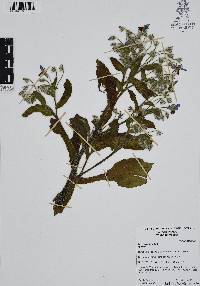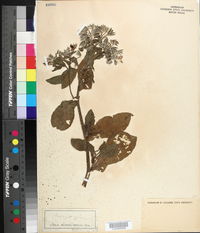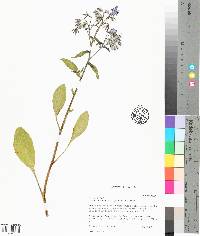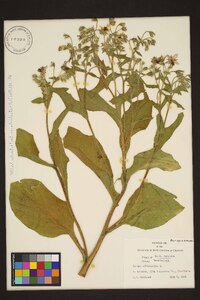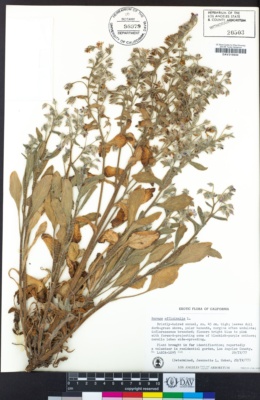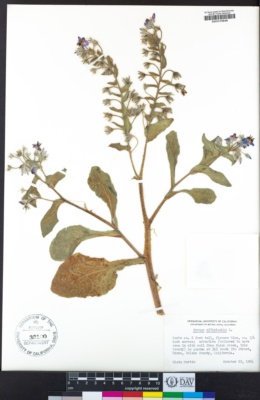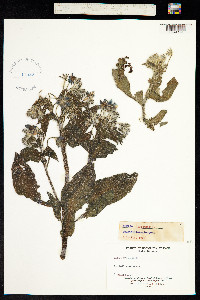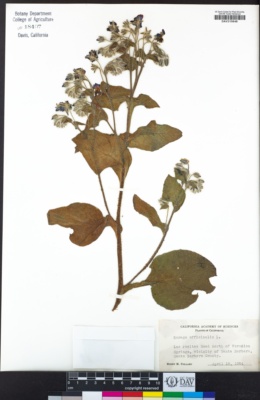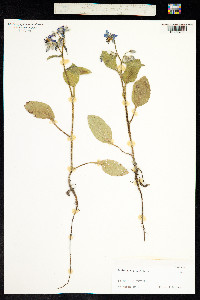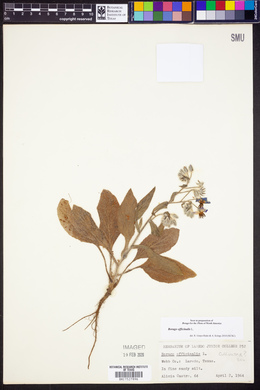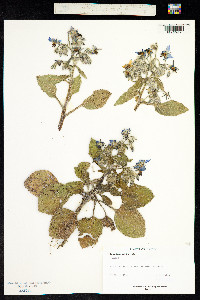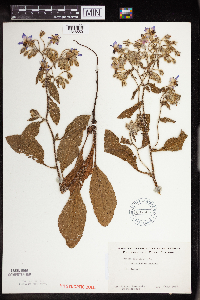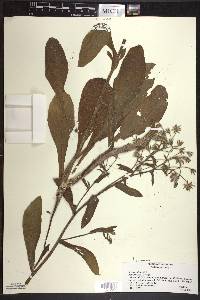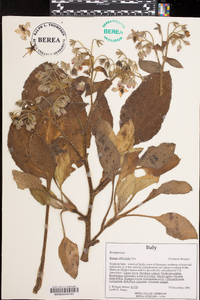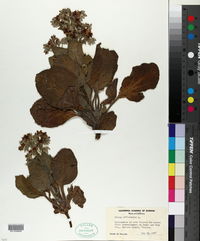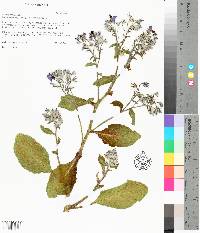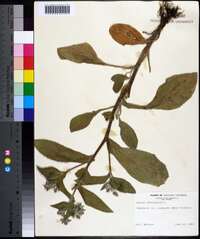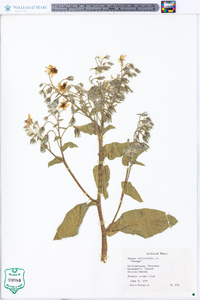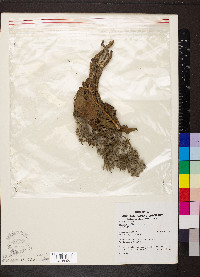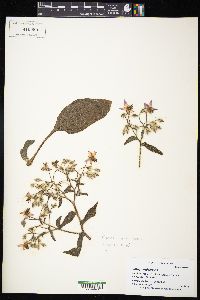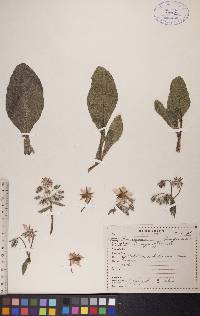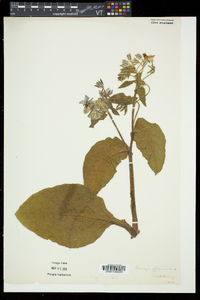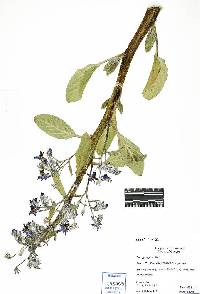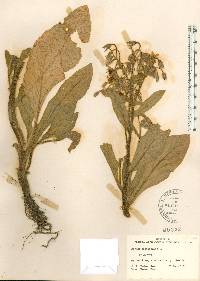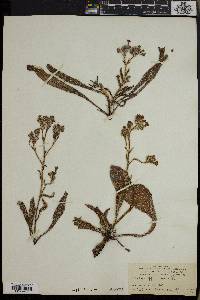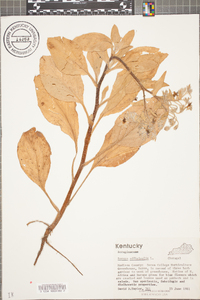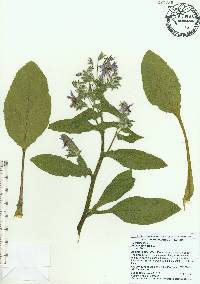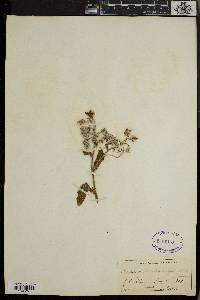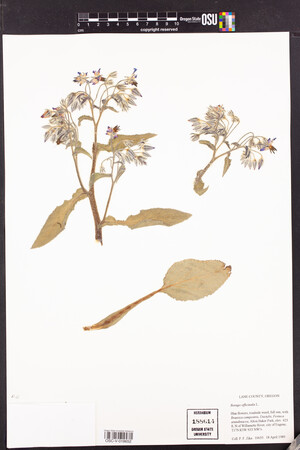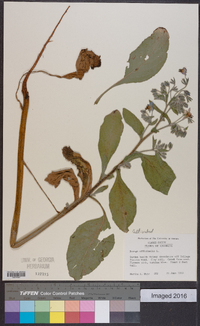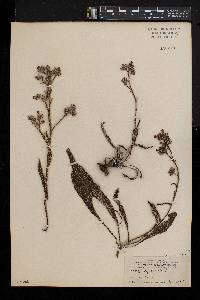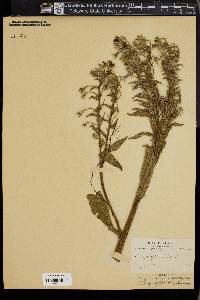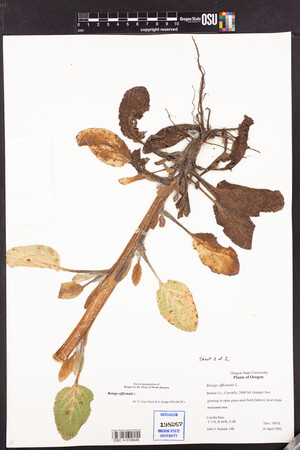Borago officinalis
|
|
|
|
Family: Boraginaceae
Borage
|
Annual herb 20 - 60 cm tall Stem: erect, and covered with long, bristly hairs. Leaves: alternate, bristly-hairy, usually non-toothed, of two kinds: lower leaves stalked, relatively large (5 - 12 cm long, 3 - 7 cm wide), and broadly elliptic or egg-shaped; upper leaves much smaller, often narrower, and often stalkless or even clasping the stem. Inflorescence: terminal, loose, many-flowered, modified leafy-bracted (at least below) branches with flowers on 1 - 4 cm long, bristly-hairy stalks. Flowers: blue, 1.6 - 2.5 cm wide, radially symmetric, with long, separate and recurved petal lobes, and a central cone-like structure composed of very large anthers. Sepals: five, dense bristly, narrowly lance-shaped, and expanding to over 1 cm long in fruit. Petals: blue, five, but fused at base into a very shallow tube with prominent, arch-like raised folds (fornices) between the bases of the separate, large, elongate, somewhat egg-shaped to triangular, long-pointed, strongly reflexed lobes. Stamens: five, with short filaments, but large and elongate (5 - 9 mm long), dark anthers which are closely positioned to form a central, erect “cone” extending far beyond the reflexed petals. Each filament has a prolonged, 3 mm long, lance-shaped appendage which extends upward along the outside of each anther. Pistil: with one, four-lobed, superior ovary; one long style positioned through center of the anther cone; and one stigma. Fruit: a cluster of four, rough, wrinkled, 4 - 5 mm tall, almost cylindric nutlets with a prominent thickened basal rim surrounding a swollen, short, stalk-like, basal appendage. The basal stalk-like structure of each nutlet fits into a central pit of the otherwise flattish base of the remnant flower. Root: a taproot. Similar species: Borago officinalis is probably most similar to our two species of Symphytum in terms of inflorescence branching, leaf shape, and the nutlets having stipe-like basal appendages. However, both S. asperum and S. officinale have tubular flowers with very short, tooth-like, erect petal lobes; the stamens lack appendages on the filaments and have small anthers closely positioned to the inside of the petal tube and never extend beyond the tube as a cone. The flowers of B. officinalis appear similar to those in the genus Solanum (Solanaceae family) due to the reflexed petals and cone of protruding anthers, but members of that genus never have a four-lobed ovary or nutlets as the fruit, plus their flowers are usually in the axils of regular leaves, and the leaves are often lobed. Flowering: May to October Habitat and ecology: Introduced from southern Europe, very rarely found as a weed in waste places. Occurence in the Chicago region: non-native Author: The Field Museum Taprooted annual 2-6 dm, hispid-setose and hispidulous; lower lvs petiolate, with broadly elliptic or ovate to oblanceolate blade 3-11 נ2-6 cm, the others progressively reduced and the upper often sessile and clasping; pedicels 1-4 cm; sep densely bristly, 1-1.5 cm in fr; cor 2 cm wide; anthers dark, 5-9 mm, the linear appendages 3 mm; nutlets subcylindric, 4-5 mm, rough and wrinkled; 2n=16. Native of Europe, sometimes cult., and established as a casual weed here and there in our range. May-Sept. Gleason, Henry A. & Cronquist, Arthur J. 1991. Manual of vascular plants of northeastern United States and adjacent Canada. lxxv + 910 pp. ©The New York Botanical Garden. All rights reserved. Used by permission. |
|
|
|

